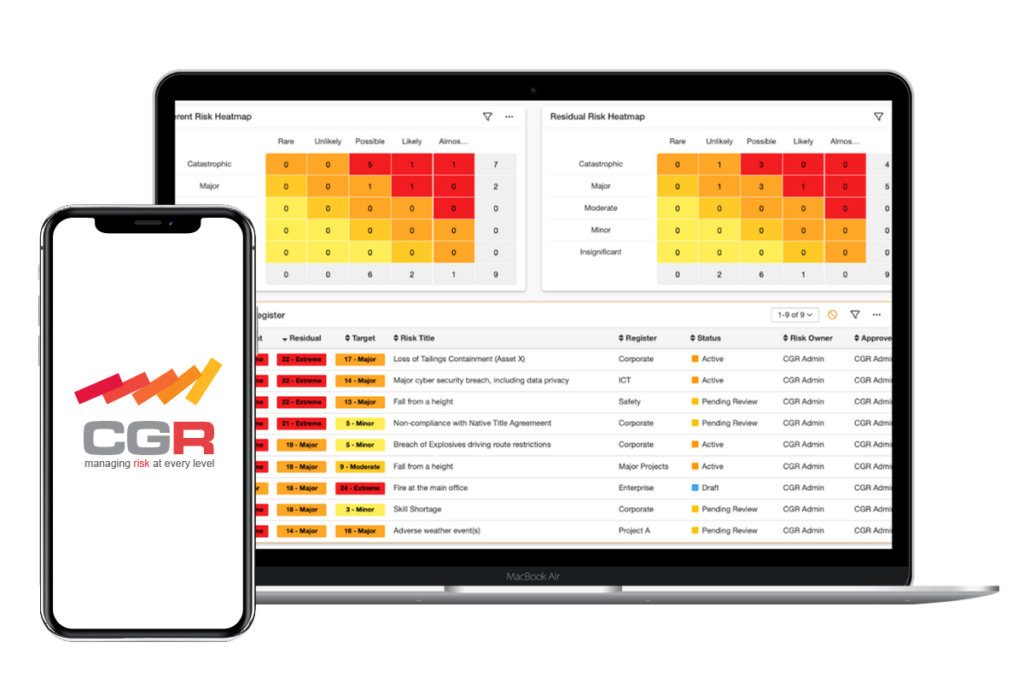The CGR blog
The UK Corporate Governance Code: Balancing Risk, Control & Assurance


From our director Patrick Parker
Patrick Parker is a Director at CGR with extensive experience in risk and project management, with a strong track record of identifying organisational problems and delivering solutions at senior board level.

For UK-listed companies, the UK Corporate Governance Code sets the tone for responsible, transparent and effective governance. Long regarded as a touchstone for boardroom standards, the Code has evolved once again in 2024, reflecting growing regulatory and stakeholder expectations, particularly around risk, internal control, and assurance.
In a landscape shaped by economic uncertainty, ESG scrutiny and digital disruption, the 2024 revisions offer a timely reminder: governance is no longer a tick-box exercise. It is a dynamic capability – one that connects risk insight, control discipline and assurance confidence into a coherent framework. The organisations that thrive will be those that treat it as such.
What Was New in the 2024 Code?
The latest iteration of the UK Corporate Governance Code places sharper focus on how companies manage and oversee risk. The Financial Reporting Council (FRC) has made it clear that effective governance is inseparable from how risk is identified, controlled, and assured at all levels of the organisation.
Notable updates include:
-
Strengthened expectations around internal controls: Boards must now explicitly declare the effectiveness of internal control frameworks in their annual reports. It’s not enough to have processes – they must be tested, monitored and demonstrably working.
-
Enhanced board oversight of risk and assurance mapping: Directors are expected to have visibility into how material risks are identified and how assurance is coordinated across the business.
-
Greater clarity on audit and assurance practices: Companies should be able to demonstrate how they derive comfort not only from internal audit, but from the collective effectiveness of the three lines of defence.
These changes signal a more integrated, accountable approach to governance, placing pressure on boards and executive teams to evidence what was once implied.
Governance: More Than Compliance
While some may view the Code as a compliance requirement, its real value lies in its principles-based approach. The FRC has deliberately resisted prescriptive rule-making. Instead, it champions a culture of integrity, accountability and leadership.
This approach puts the onus on boards to demonstrate judgment, not just adherence. Risk Management, internal control, and assurance are not standalone functions, they are governance levers that, when aligned, create resilience and trust.
The Three Pillars: Risk, Control & Assurance
Risk must be more than a register. Leading companies embed enterprise risk management into strategy setting, performance tracking and decision-making. Material risks are not just identified; they are continuously evaluated in light of emerging threats and shifting priorities.
Control requires clarity, consistency and visibility. Policies, internal frameworks and digital records must align to support timely action and accountability. Without visibility, control becomes an illusion.
Assurance depends on coordination. Many firms struggle to unify their first, second and third lines. The 2024 Code reinforces the need for structured assurance mapping, ensuring that board committees understand where assurance comes from, and what level of confidence it provides.
Common Challenges
Despite best intentions, many firms fall short when it comes to integrating risk, control and assurance:
-
Functional silos between risk, compliance and internal audit lead to duplication and gaps.
-
Limited tracking of control effectiveness makes it difficult to assess actual performance.
-
Board reporting is often inconsistent, reactive, and retrospective.
-
Reliance on manual processes – especially spreadsheets, creates version control issues and impedes traceability.
These issues are not simply operational – they are governance risks in themselves.
Technology as an Enabler
This is where technology can play a decisive role. Modern Governance, Risk and Compliance (GRC) platforms are specifically designed to centralise and streamline the core elements of effective governance.
By using technology to:
-
Consolidate risk and control registers,
-
Automate assurance workflows, and
-
Surface real-time dashboards for board visibility,
organisations not only improve compliance but enhance decision-making. Features like audit trails, version history, and linked risks-to-controls mapping bring much-needed transparency and agility.
In the context of the 2024 Code, these capabilities aren’t just helpful – they are essential. The days of relying on static templates and fragmented systems are numbered.
Looking for a better way to manage risks?

What Good Looks Like
Organisations aligned with the spirit and letter of the Code typically demonstrate:
-
A culture where risk is owned, not delegated.
-
Consistent and transparent reporting across risk, control, and assurance.
-
Board engagement that goes beyond sign-off to active oversight.
In practice, this means moving away from reactive governance towards proactive stewardship. It means using data and insight, not just instinct, to inform judgement.
Final Thoughts
The 2024 update to the UK Corporate Governance Code is not a bureaucratic exercise. It reflects a deeper truth: that good governance is inseparable from how a business anticipates risk, embeds control, and delivers assurance.
Firms that take this seriously will not only meet regulatory expectations, they will be more resilient, more trusted, and better positioned for growth.



